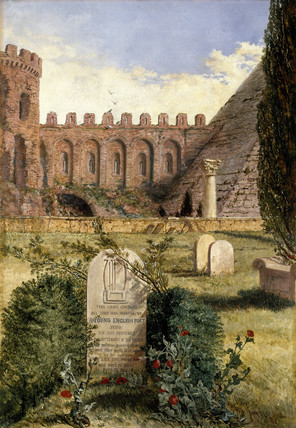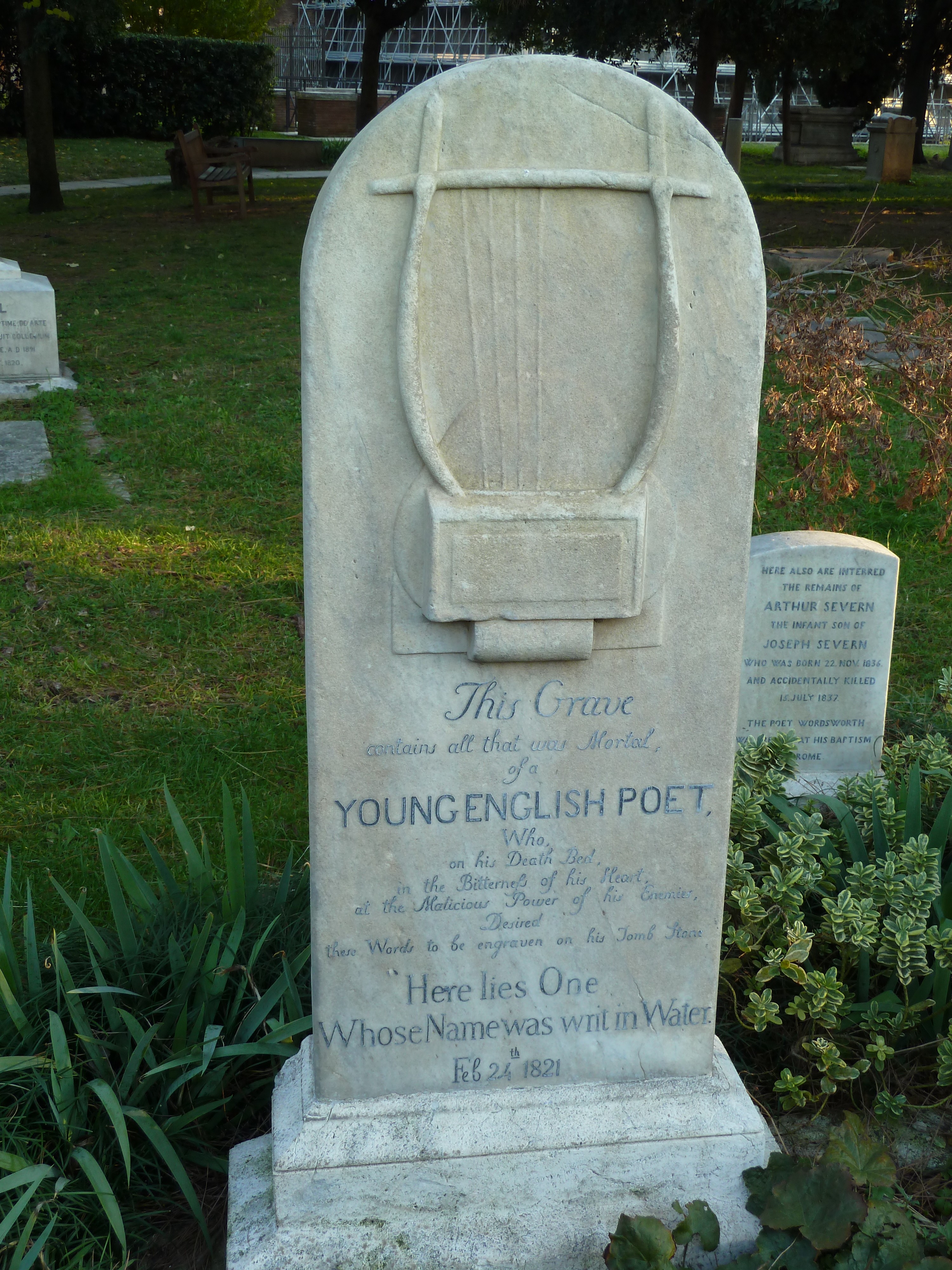Burying a Protestant in nineteenth-century Rome was a dangerous business. Such was the hostility to non-Catholics that the authorities insisted on their funerals taking place at night; sometimes the mourners had to be protected by soldiers. So it was before dawn on 26th February 1821 that John Keats’s body was taken through the city.
If you visit the “Non-Catholic” Cemetery today, as it is now called, since it includes many people of other religions, you won’t find Keats’s name on his gravestone.
Despairing of recognition for his work, he asked for the simple inscription Here lies one whose name was writ on water – though his friends added a reference to a young English poet and his ill-treatment by his countrymen. You have to turn to the stone beside his, inscribed to Joseph Severn, Devoted friend and deathbed companion of John Keats, for a positive ID.

William Bell Scott's Keats' Grave. Courtesy of the Ashmoleon Museum.
The grave isn’t even in the best part of the cemetery. While Shelley’s ashes are buried in a quiet, shady spot, Keats lies in an exposed corner with the noise of a main road in the background. But many of those who have visited it over the past two centuries have felt it to be – as Oscar Wilde did – the holiest place in Rome.

And despite Morrissey declaring that Keats wasn't on his side, he seemed adoring enough when he paid a visit.
They’re still coming. Such is their eagerness to stand on the edge of the grave (though you can read the headstone easily enough from the path) that it has just had to be re-turfed and repaired. The dozen mourners who followed the 25-year-old poet’s coffin early on that February morning can hardly have imagined such a thing.
As for Keats, I wonder if anyone who wrote his own epitaph ever got it more completely wrong. Only, perhaps, Shelley’s Ozymandias.
Anthony Gardner, Keats Shelley Memorial Association
